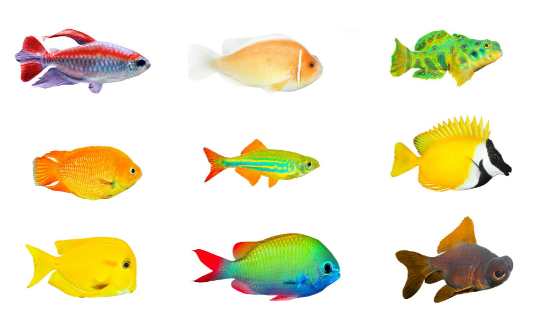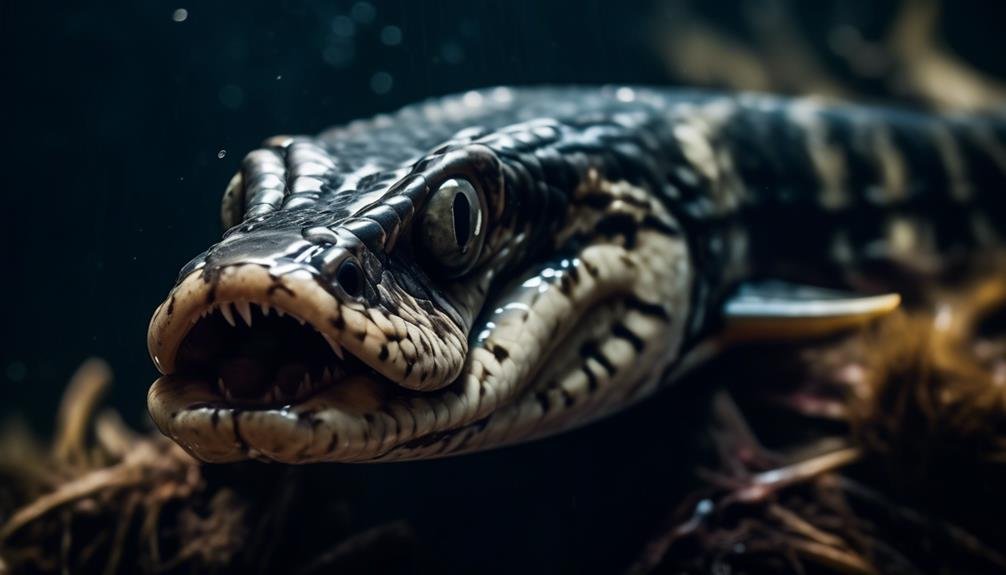
The world of freshwater aquariums is teeming with intriguing creatures. One species that stands out is the snakehead fish. With their menacing appearance and aggressive behavior, these aquatic monsters have piqued the interest of seasoned aquarists and fish enthusiasts alike. Known for their snake-like scales and formidable fins, snakeheads possess a distinct and intimidating presence. But what makes these creatures truly terrifying? What secrets do they hold?
Join us on a journey into the world of snakeheads, where we will explore their size, temperament, feeding habits, and more. Brace yourself, for the mysteries of these aquatic monsters are waiting to be unraveled.
Key Takeaways
- Snakeheads are large, aggressive fish that require experienced aquarists to care for them properly.
- They need large aquariums or ponds with ample surface space and hiding places.
- Snakeheads are carnivores and prefer live foods, but can be trained to accept frozen and dead foods.
- Breeding snakeheads is not difficult, but sexing them can be challenging, so it’s best to raise a group in a large aquarium to allow natural pairing.
Description of Snakeheads
Snakeheads are a fascinating and unique species of tropical fish known for their distinctive features and captivating appearance. These large fish have a flattened shape and scales on their head that resemble snakes, giving them their name. They also have long dorsal and anal fins that run along their bodies.
Snakeheads are popular among experienced aquarists and are sometimes referred to as Frankenfish, Channa, and Monster Fish. They originate from areas in Southeastern Iran, Eastern Afghanistan, and across Asia, with some species also found in Africa.
With their striking appearance and aggressive temperament, snakeheads require large aquariums or ponds for proper care. They prefer environments with plenty of plant cover and hiding places. Snakeheads are demanding and should only be kept by experienced aquarists who can provide them with the care and attention they need.
Size, Temperament, and Care Requirements
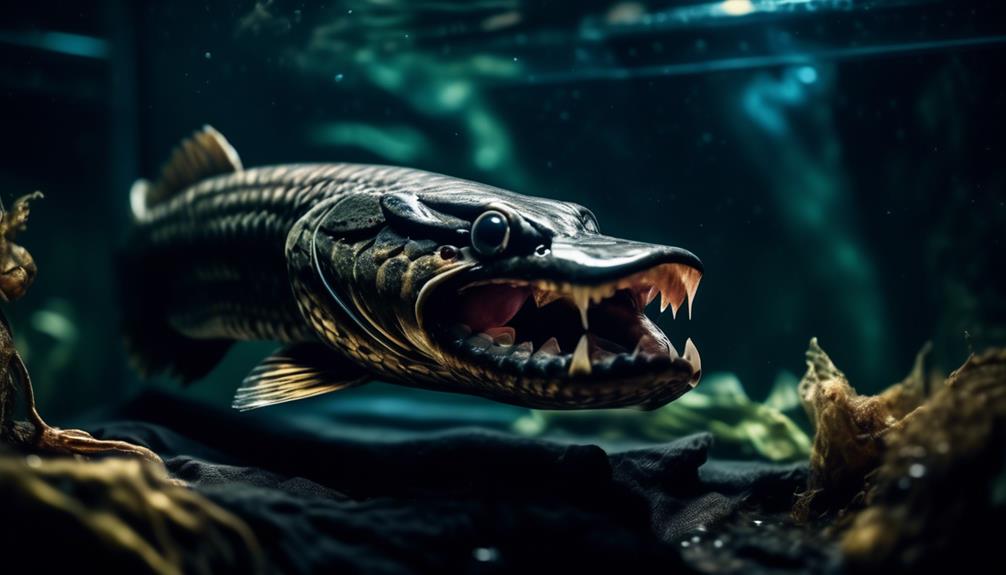
Snakeheads are known for their large size and aggressive temperament, requiring experienced aquarists to provide them with proper care and attention. These aquatic monsters can grow up to a meter in length, making them a formidable presence in any tank or pond. Their aggressive nature means that they should be kept alone or in pairs, as they can become territorial and may harm other fish.
Snakeheads also have unique care requirements, needing large aquariums or ponds with ample surface space for them to breathe surface air. They prefer aquariums with plenty of plant cover and hiding places, but it’s important to note that they’re powerful fish and can easily knock over decorations.
Due to their demanding nature, snakeheads should only be kept by experienced aquarists who can provide the weekly care and attention that they require.
Feeding Habits
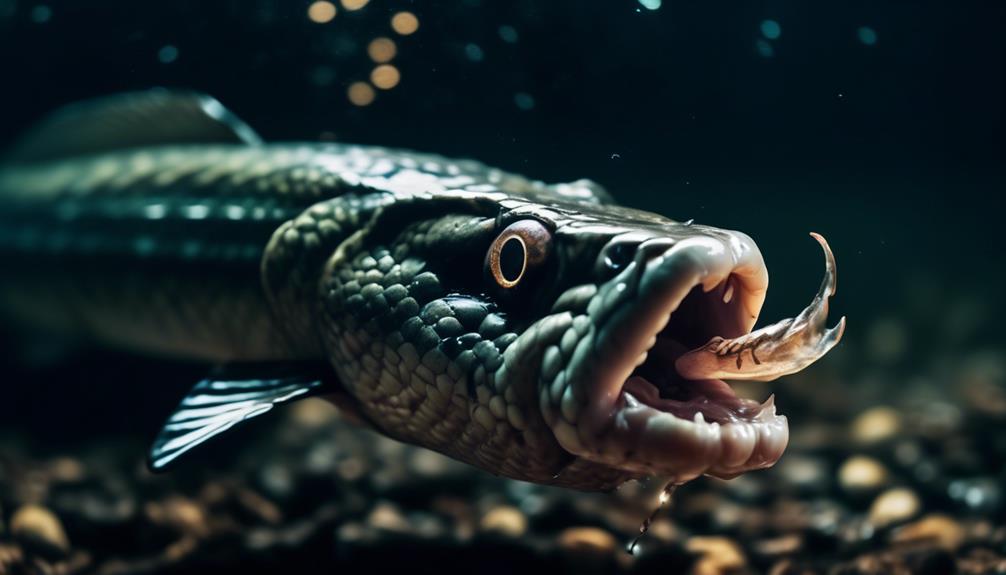
After addressing the size, temperament, and care requirements of snakeheads, it’s crucial to explore their feeding habits.
Snakeheads are carnivores and have a strong preference for live foods. However, they can be trained to accept frozen and dead foods as well.
Their diet can consist of fish, shrimp, mussels, earthworms, crickets, and pellet-based aquarium foods.
As fierce predators, snakeheads shouldn’t be kept with smaller fish, as they may become prey. However, some peaceful species of snakeheads can be kept with large catfish and peaceful cichlids.
It’s important to note that snakeheads are demanding when it comes to feeding, and their diet should be varied and nutritious to ensure their health and well-being.
Breeding and Reproduction
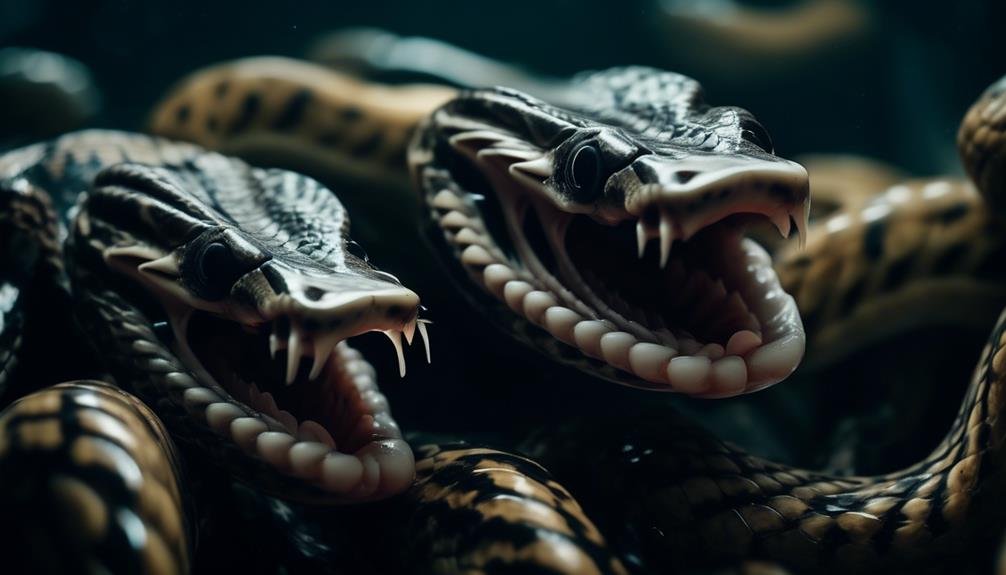
Breeding and reproduction of snakeheads is a relatively straightforward process that can be accomplished with proper conditions and careful observation. Here are three key points to consider:
- Spawning Behavior: Snakeheads are known for their unique spawning behavior. They construct a nest by clearing an area on the substrate and guarding it fiercely. The male and female snakeheads will perform courtship rituals, where they swim around each other and touch their bodies together. Once the female releases her eggs, the male fertilizes them and takes responsibility for guarding the nest.
- Conditions for Successful Breeding: To encourage breeding, maintain a suitable environment with clean and well-oxygenated water. The temperature should be around 75-85°F (24-29°C), and the pH level should be slightly acidic. Providing ample hiding spots and vegetation in the aquarium will help simulate their natural habitat and create a sense of security for the breeding pair.
- Care of Eggs and Fry: Once the eggs are laid, it’s crucial to keep a close eye on the breeding pair. They’ll diligently guard the eggs, fanning them with their fins to ensure proper oxygenation. It’s essential to provide high-quality food, such as small live or frozen foods, for the fry after they hatch. Regular water changes and maintenance are necessary to maintain optimal conditions for the growing fry.
Varieties of Snakeheads
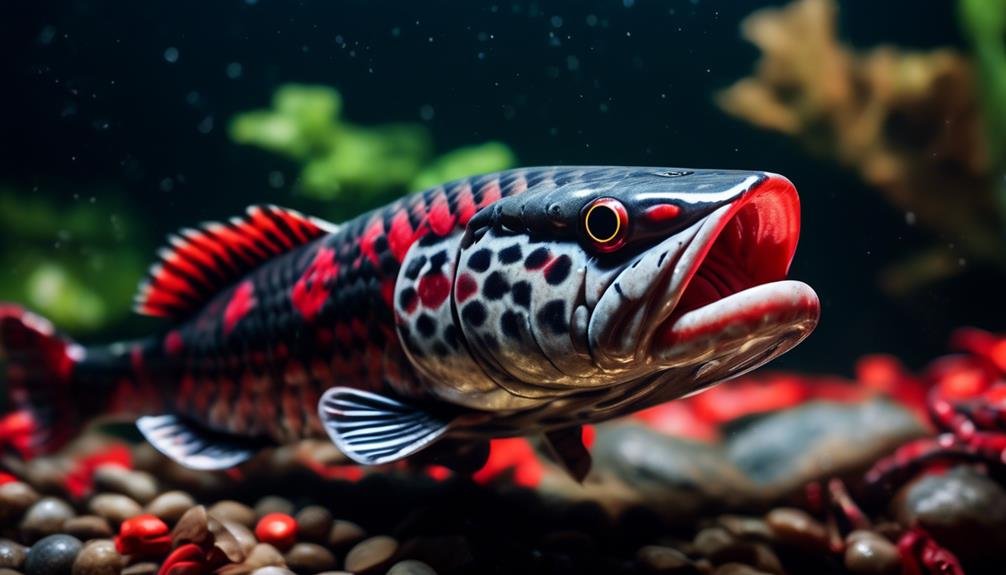
With successful breeding and reproduction of snakeheads, aquarists can explore the fascinating world of the various varieties these impressive fish have to offer. There are several aquarium varieties of snakeheads, each with its own unique characteristics and appearance. Here are some examples of the different varieties:
| Variety | Description | Size |
|---|---|---|
| Golden Cobra | Features a golden coloration with distinctive cobra-like markings on its body. | Up to 70 cm |
| Red | Known for its vibrant red coloration, making it a striking addition to any aquarium. | Up to 60 cm |
| Dwarf | Smaller in size compared to other varieties, making it suitable for smaller aquariums. | Up to 30 cm |
| Emperor | Recognized by its regal appearance and majestic presence. | Up to 90 cm |
| Rainbow | Displays a beautiful array of colors, resembling a rainbow. | Up to 80 cm |
| Splendid | Possesses a stunning pattern of spots and stripes on its body. | Up to 50 cm |
| African Snakehead | Originates from Africa and has unique adaptations to its environment. | Up to 120 cm or more |
These varieties of snakeheads offer aquarists a chance to appreciate the diversity and beauty of these formidable fish. Whether it’s the striking colors of the Golden Cobra or the regal appearance of the Emperor, each variety brings its own charm to the aquarium.
Habitat and Distribution
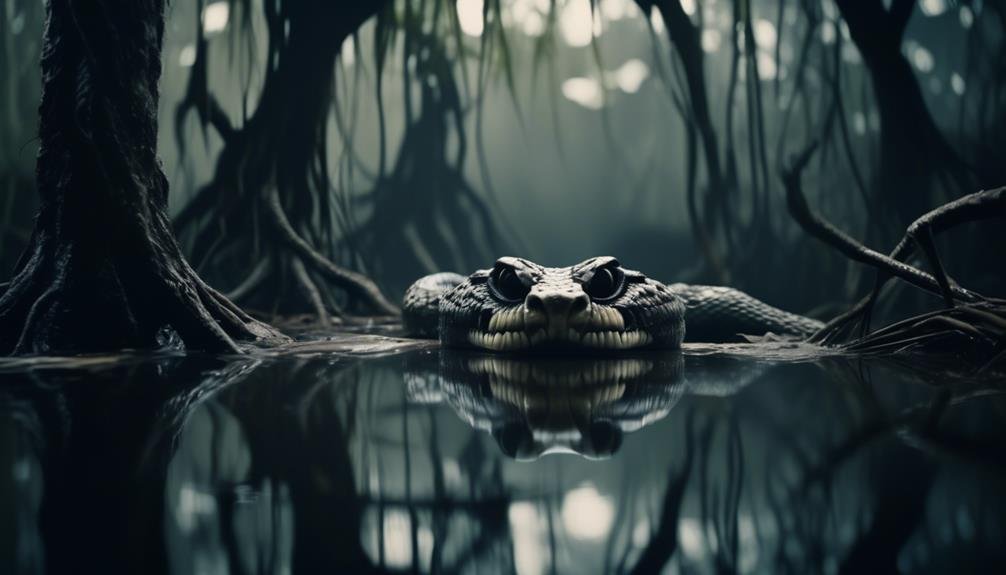
Snakeheads are native to various regions in Southeastern Iran, Eastern Afghanistan, and across Asia, with some species also found in Africa. These aquatic monsters have adapted to a wide range of habitats and can be found in diverse environments. Here are three key points about their habitat and distribution:
1) Snakeheads thrive in freshwater ecosystems such as rivers, lakes, and ponds. They prefer slow-moving or stagnant waters with abundant vegetation and hiding places.
2) Some snakehead species have been introduced to non-native habitats, posing a threat to local ecosystems. They’re highly adaptable and can survive in different climates, making them a potential invasive species.
3) Due to their ability to tolerate low oxygen levels and even survive out of water for short periods, snakeheads can colonize new areas and disperse rapidly, further contributing to their spread.
Understanding the habitat and distribution of snakeheads is crucial for managing their populations and preventing potential ecological disruptions.
Conservation Status
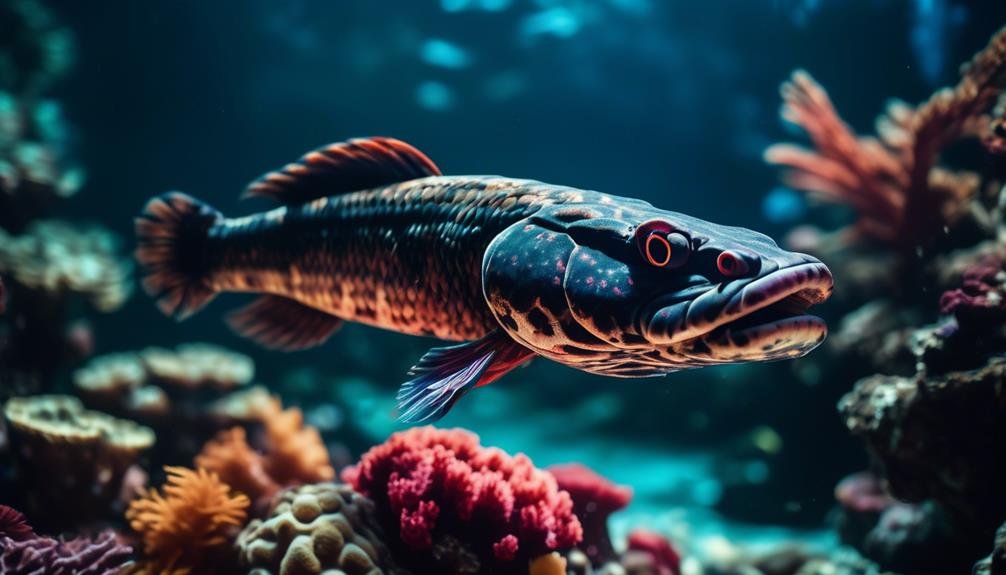
The conservation status of snakeheads is a matter of concern due to their potential impact on native ecosystems. Snakeheads are considered invasive species in many regions where they’ve been introduced outside their natural habitat.
Their aggressive nature, fast growth rate, and ability to breathe air allow them to outcompete native fish species for resources and disrupt the balance of aquatic ecosystems. In some cases, snakeheads have caused significant declines in native fish populations and altered the structure and function of entire ecosystems.
Efforts are being made to control the spread of snakeheads and prevent their establishment in new areas. This includes regulations on the import and possession of snakeheads, as well as targeted removal efforts to eradicate established populations. Continued monitoring and management are necessary to minimize the negative impacts of snakeheads on native biodiversity.
Frequently Asked Questions
Can Snakeheads Be Kept in a Community Aquarium With Other Fish?
Snakeheads should not be kept in a community aquarium with other fish. They are aggressive and can prey on smaller fish. Suitable tank mates include large catfish and peaceful cichlids.
Do Snakeheads Require Any Special Water Parameters or Conditions?
Snakeheads do not require any special water parameters or conditions. However, they need large aquariums with ample surface space and plenty of plant cover. They are powerful fish and should be kept with suitable tank mates.
How Long Can Snakeheads Live in Captivity?
Snakeheads can live up to 15 years in captivity with proper care. They require large aquariums, a varied diet, and regular attention. Experienced aquarists should be mindful of their aggressive nature and provide suitable tank mates.
Are Snakeheads Legal to Keep as Pets in All Countries?
Snakeheads are not legal to keep as pets in all countries. The legality of owning snakeheads as pets varies depending on the country and region. It is important to research and comply with local regulations before keeping snakeheads.
Can Snakeheads Survive in Freshwater Ponds or Do They Require a Saltwater Environment?
Snakeheads can survive in freshwater ponds as they do not require a saltwater environment. They are adaptable and can thrive in various aquatic habitats, including ponds, rivers, and lakes.
Can Snakeheads and Lionfish Coexist in the Same Aquarium?
Yes, snakeheads and majestic lionfish for aquarium can coexist, but caution is advised. Both species are aggressive predators and may not tolerate each other, possibly leading to conflicts or danger. It’s important to carefully research their requirements and behavior before attempting to house them together.
Conclusion
In conclusion, snakehead fish are truly fascinating and captivating creatures that are a must-see for any fish enthusiast. With their menacing appearance and aggressive nature, they stand out as true aquatic monsters in the world of freshwater aquariums.
From their size and temperament to their care requirements and feeding habits, snakeheads offer a unique and thrilling experience for those who dare to observe them.
So be sure to explore the secrets of these captivating creatures and witness their intimidating presence firsthand.




